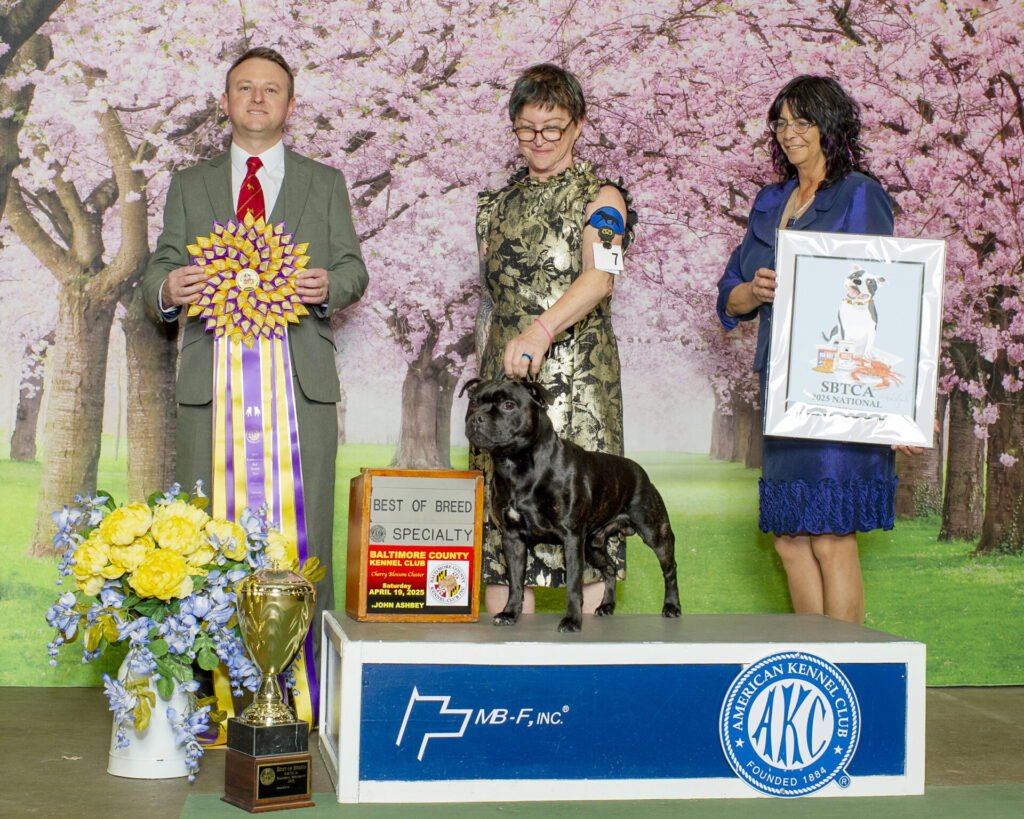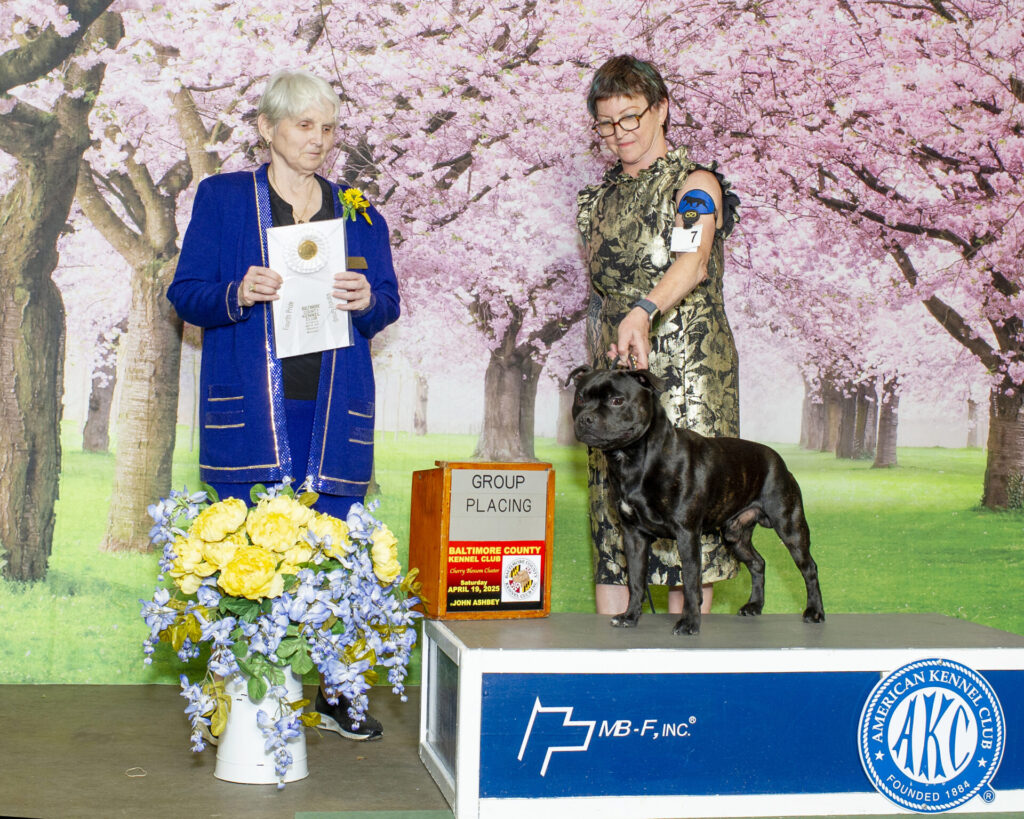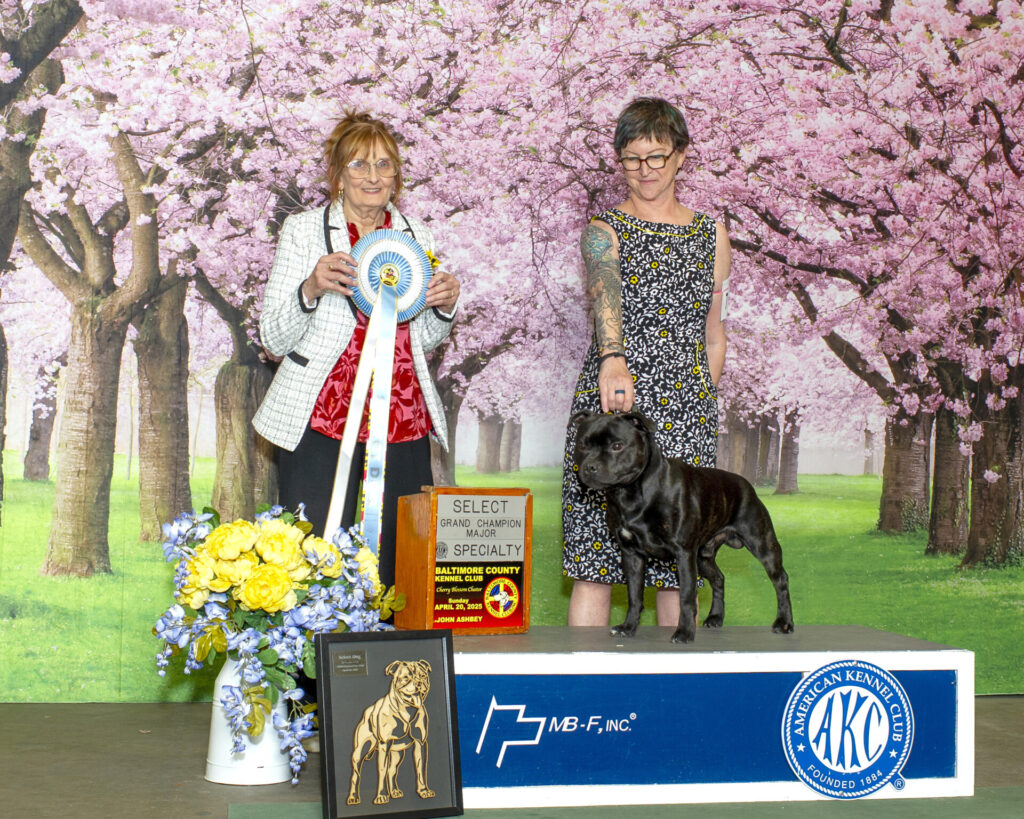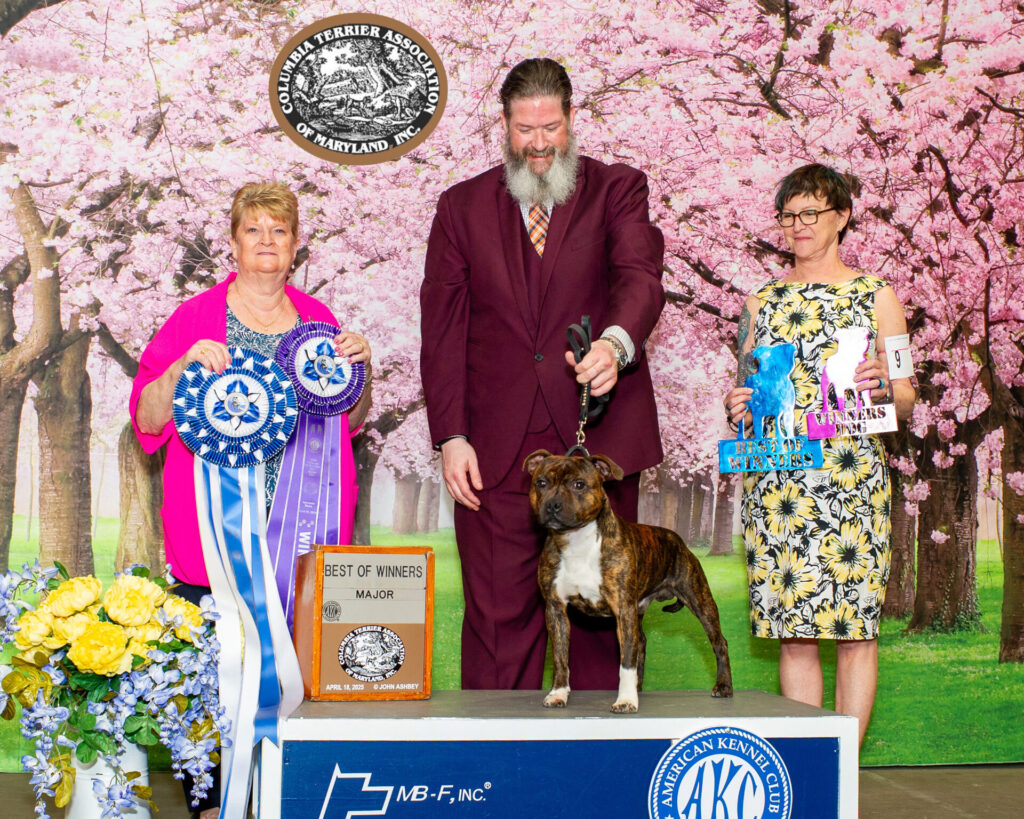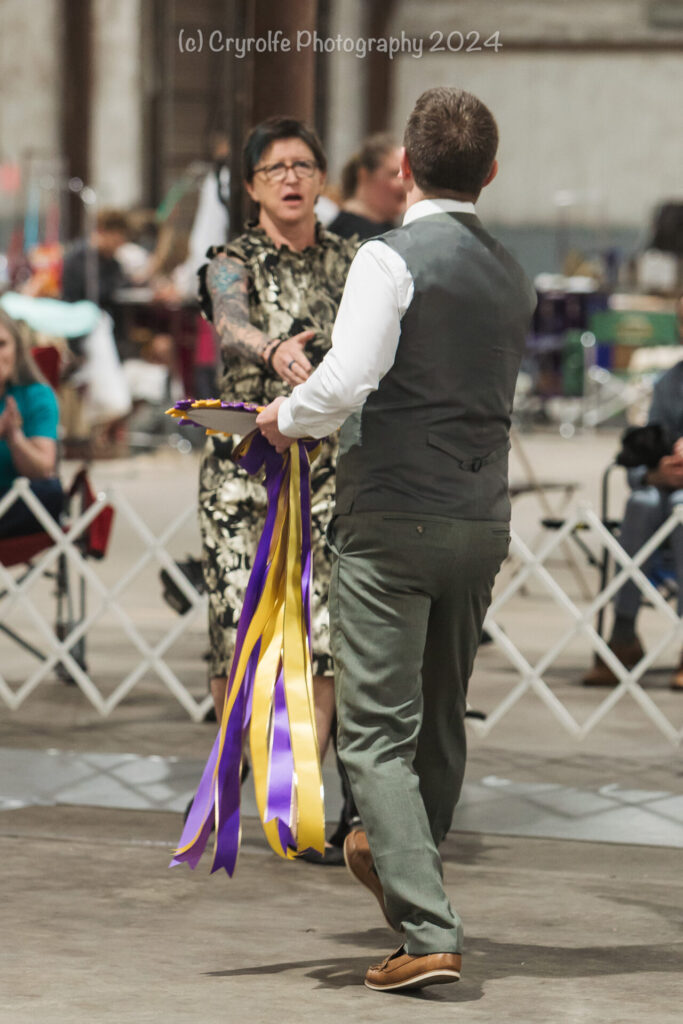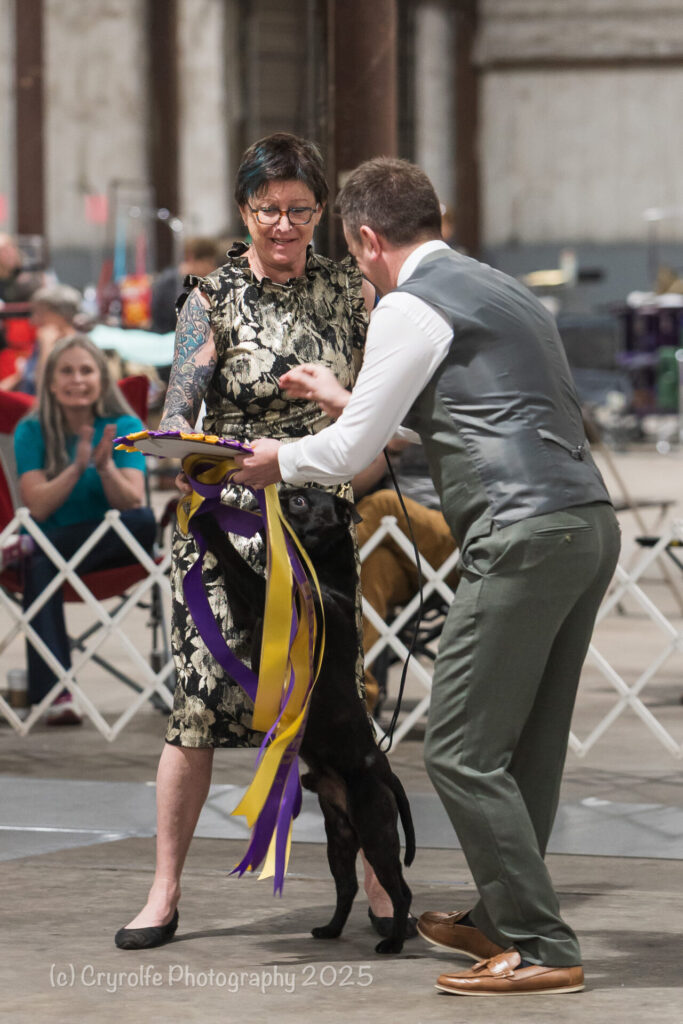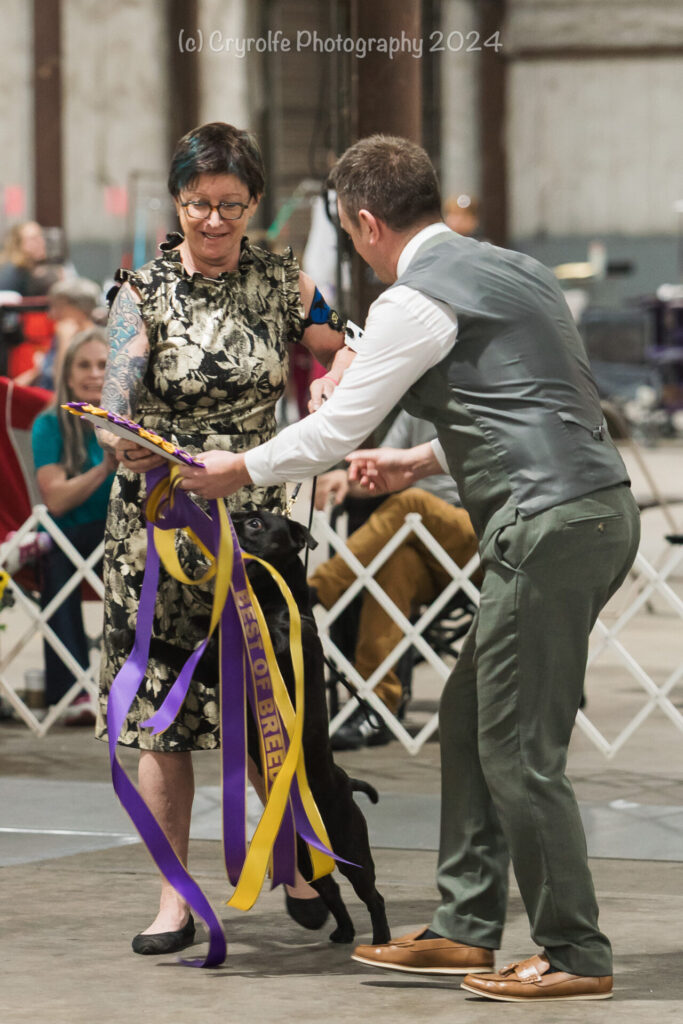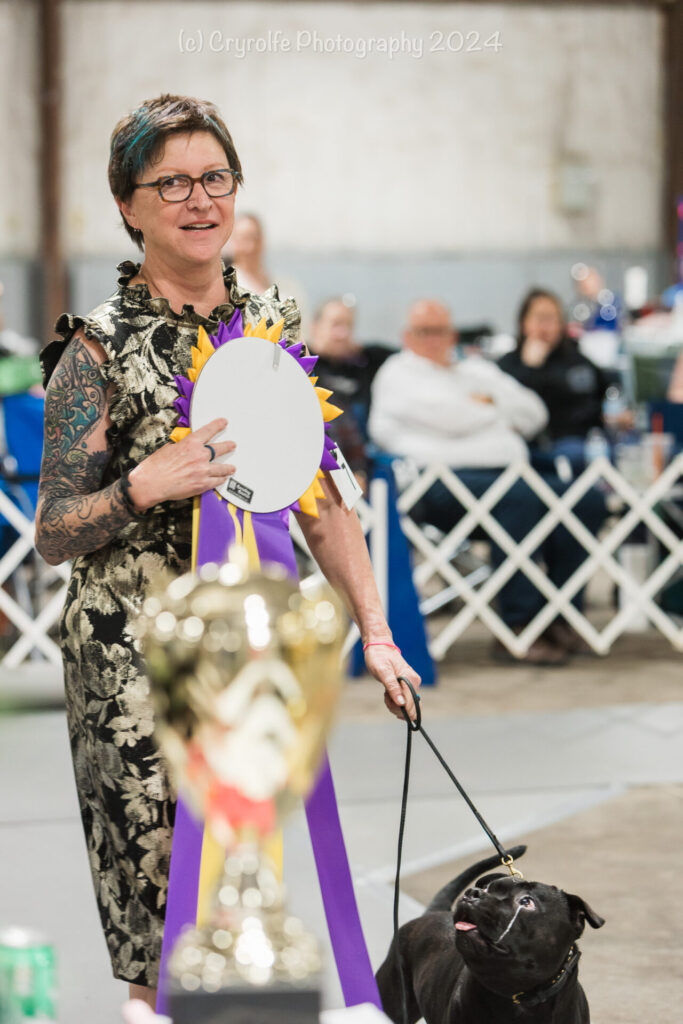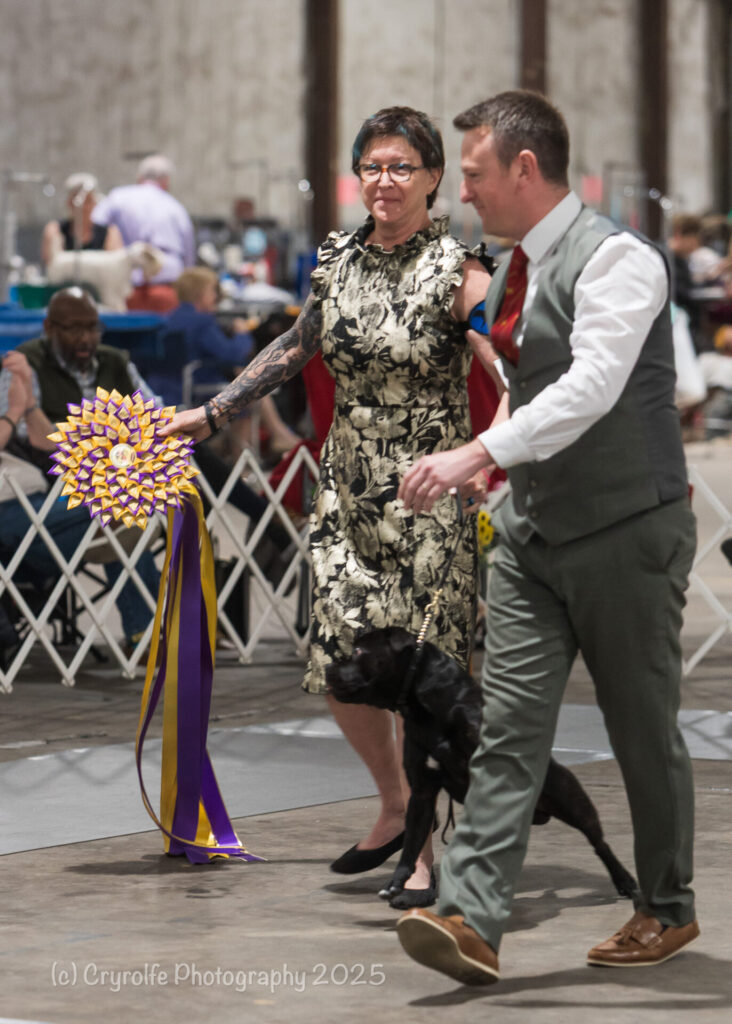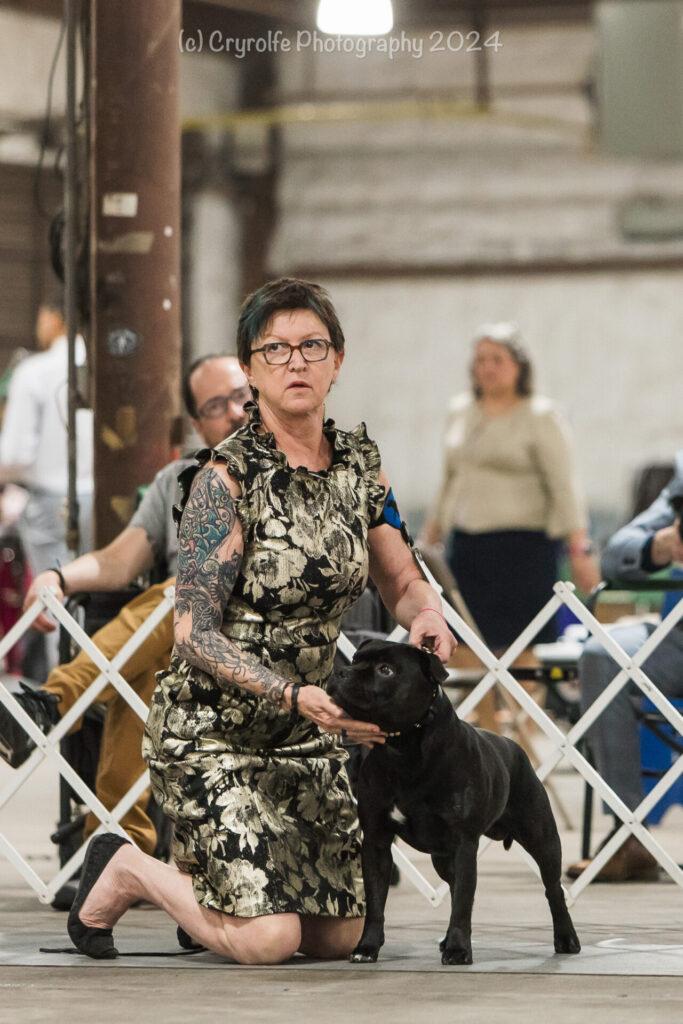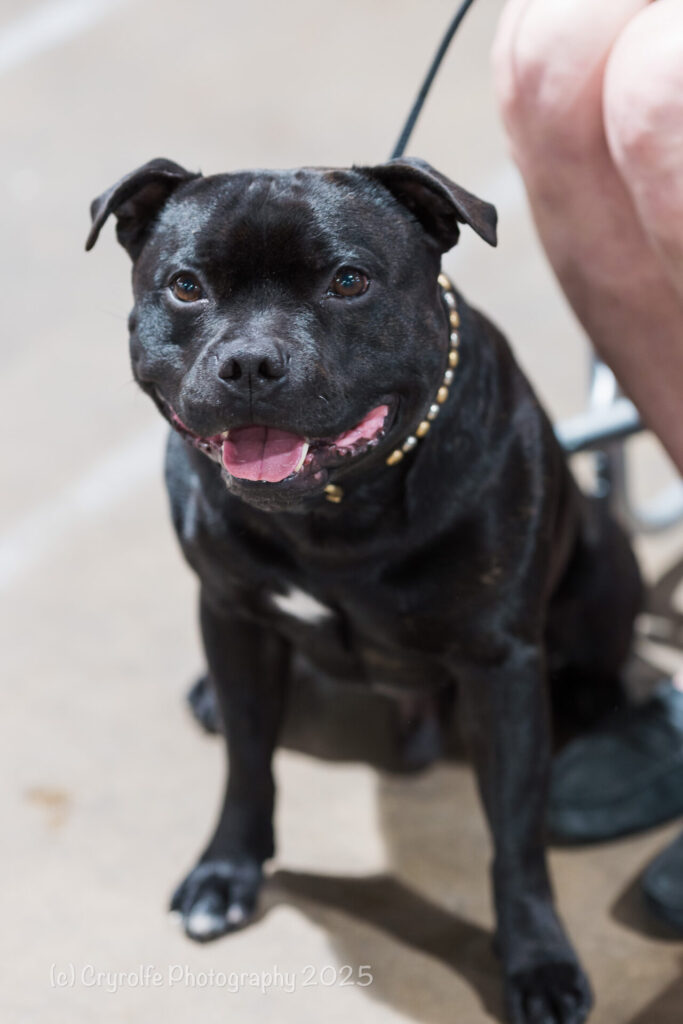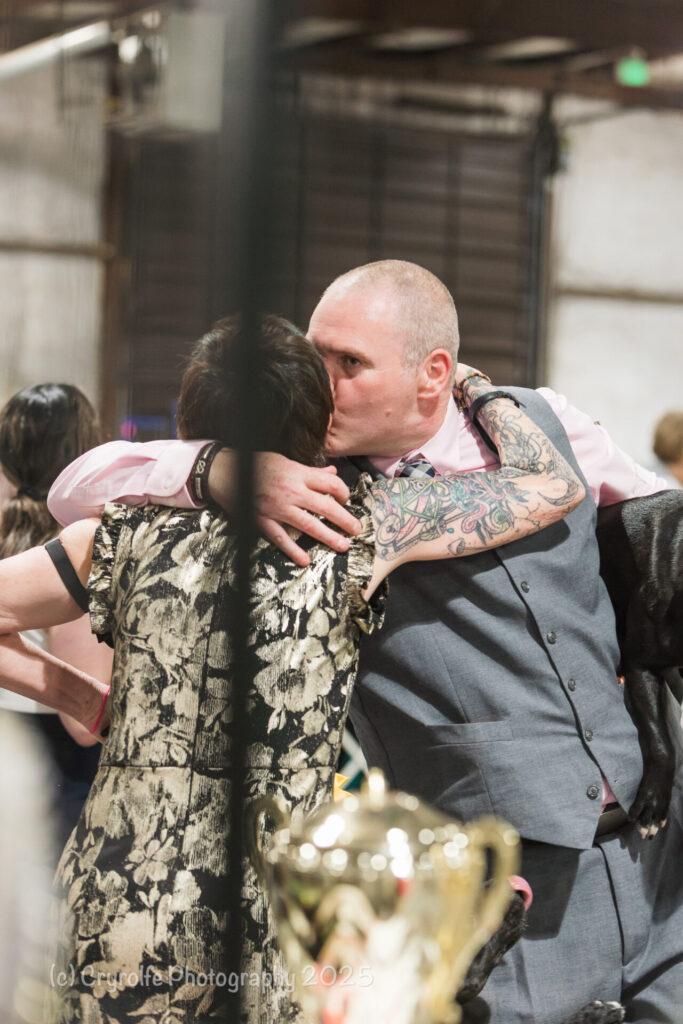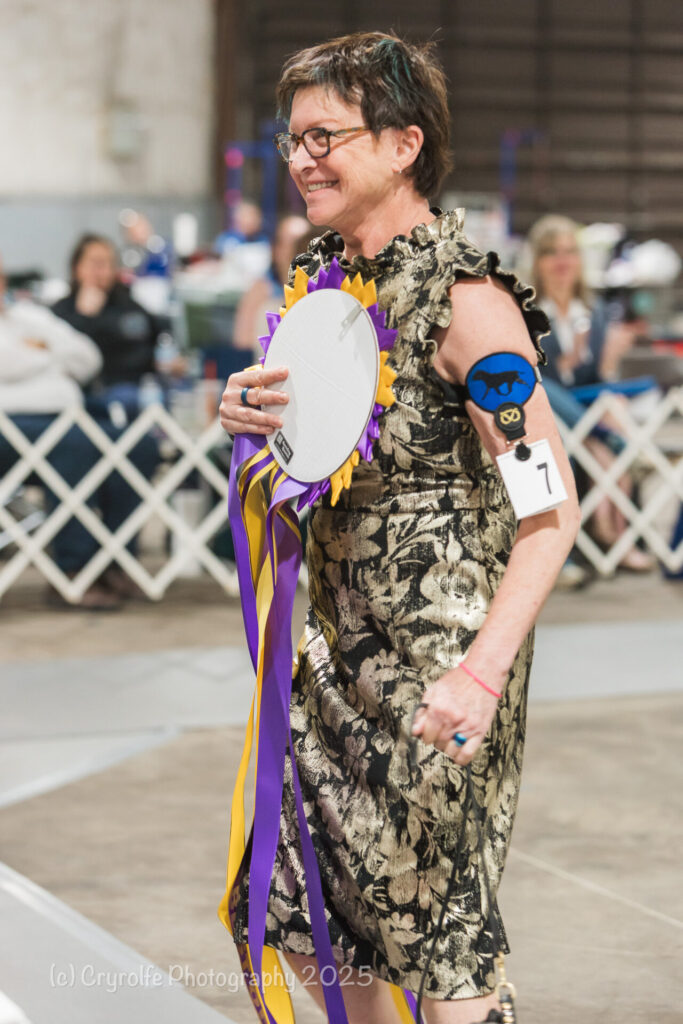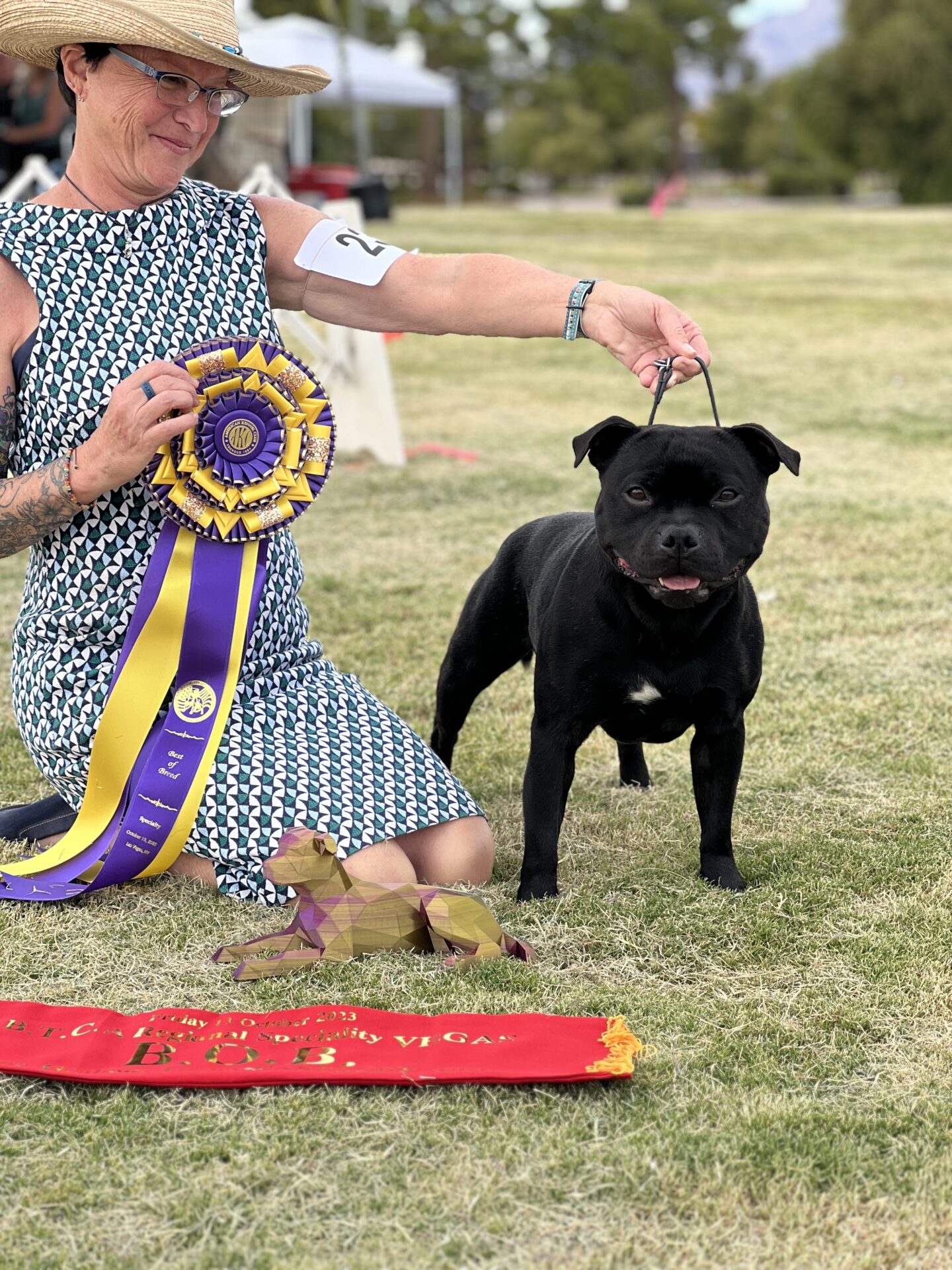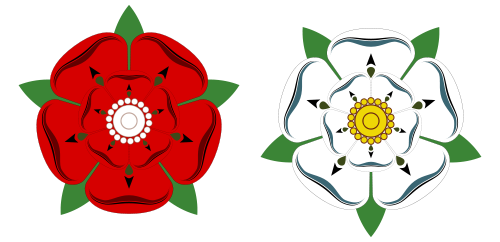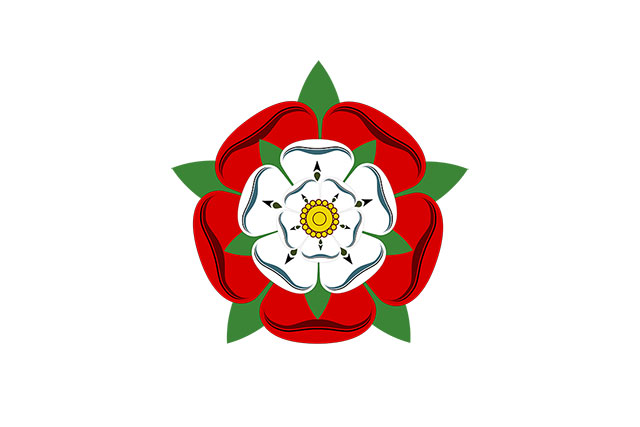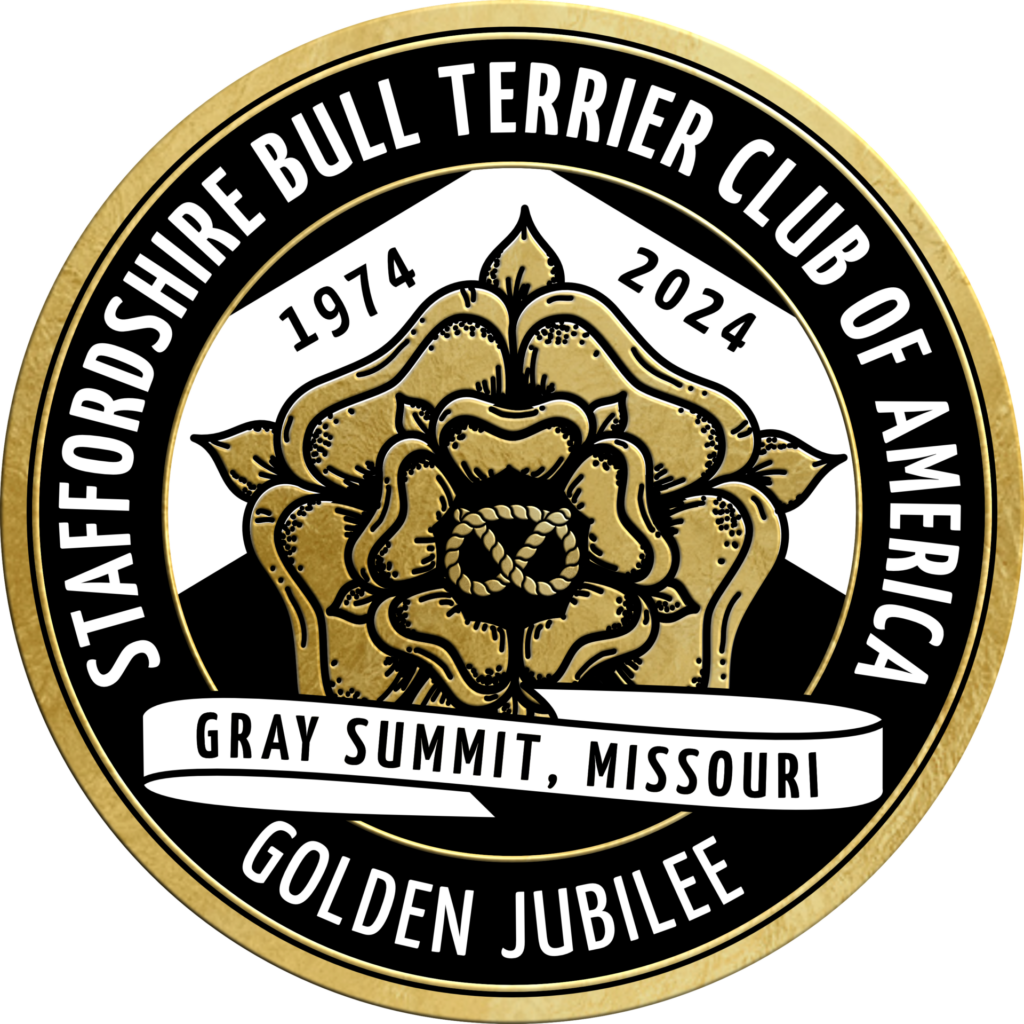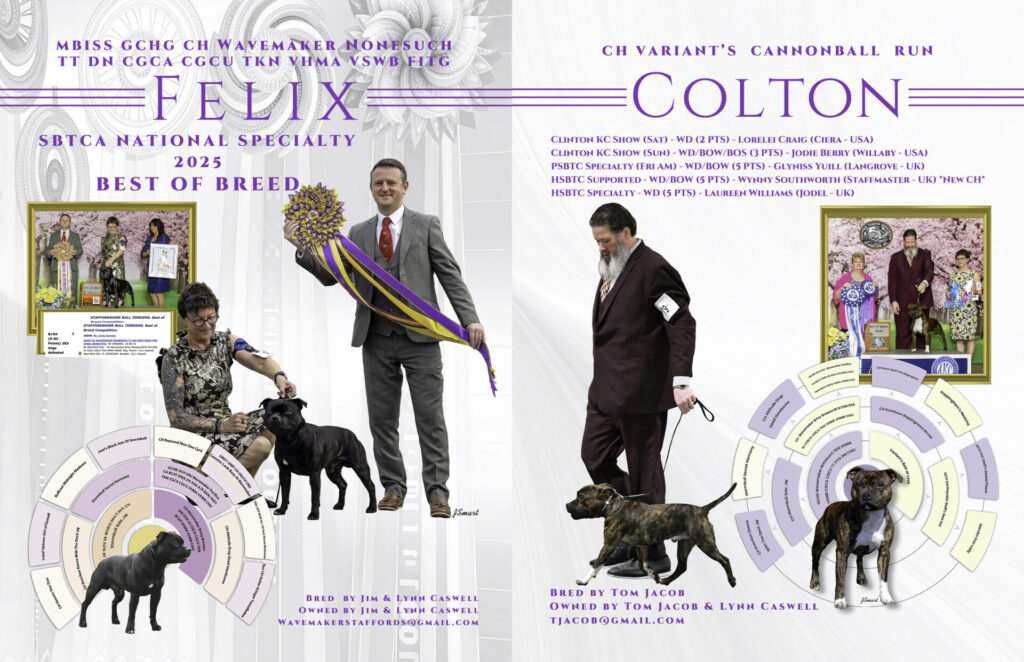
MBISS GCHG Wavemaker Nonesuch TT DN CGCA CGCU TKN VHMA VSWB FITG CHIC – Felix –was recognized BEST OF BREED under judge Marie McNally at the SBTCO and then SD under judge Terri Cournoyer at Chintinimi KC Supported show.
Felix was then awarded BEST OF BREED under judge Craig Scanlon at the 2025 SBTCA National Specialty in Timonium, MD. He was awarded Select Dog the following day under judge Karen Waltham.
Felix was also recognized Top Stafford USA, Top 20 People’s Choice winner as well as AKC #1 Stafford for April only seeing a show ring 4 weekends.
Not to be outdone, his son CH Variant’s Cannonball Run – Colton – began his show career with a bang by completing his title in rapid succession under the following Stafford breed specialists:
• Clinton KC Show (Sat) – WD (2 PTS) – Lorelei Craig
• Clinton KC Show (Sun) – WD/BOW/BOS (3 PTS) – Jodie Berry
• PSBTC Specialty (Fri AM) – WD/BOW (5 PTS) – Glyniss Yuill
• HSBTC Stafford Hoopla Supported – WD/BOW (5 PTS New CH AKC pending) – Wynny Southworth
• HSBTC Stafford Hoopla Specialty – WD (5 PTS) – Laureen Williams
Look for Colton and Tom to continue having fun at shows this year and beyond! Colton is owned by Tom Jacob and Lynn Caswell.
Felix began his conformation career at the Ohio 2021 SBTCA National Specialty by being awarded WD/BOW under judge Kimberly Washington and again WD under judge Chris Jacksic at the SBTCA Regional Specialty and it escalated from there to an incredible show career so far. We are incredibly humbled and thankful by the opinions of others of this Stafford. He is a great dog to live with having both a wonderful kind even temperament and being full Stafford fire as well.
At five years old Felix has won Best of Breed at 11 Specialty shows so far and dozens of incredible BOS, SD and Group Placements. The following list is only a small highlight of the last four years achievements, not to diminish at all the rest of the Breeder Specialist and Terrier Specialist Judges who have awarded Felix top honors at Specialty and Supported shows.
1. BOB Montgomery County KC SBTCA Specialty 2021 – Jason Nicolai
2. BOB SBTCF Specialty 2023 – Duff Harris
3. BOB Stafford Showdown Specialty 2023 – Eric Galvin
4. BOB Puget Sound Specialty #1 2023 – Judy Heller
5. BOB Puget Sound Specialty #2 2023 – Lorelei Craig
6. BOB Stafford Roulette Specialty 2023 – Graham Turley
7. BOB Area 2 Perry Specialty 2024 – Michelle Bryant
*BOS SBTCA National Specialty Golden Jubilee 2024 – Melanie Corcoran
8. BOB Montgomery County KC SBTCA Specialty 2024 – Fiona McBride
*G2 BBE Montgomery County KC 2024
9. BOB Puget Sound Specialty #1 2024 – Kate Holmen
10. BOB SBTCO Albany, OR Specialty 2025 – Marie McNally
11. BOB SBTCA National Specialty 2025 – Craig Scanlon


